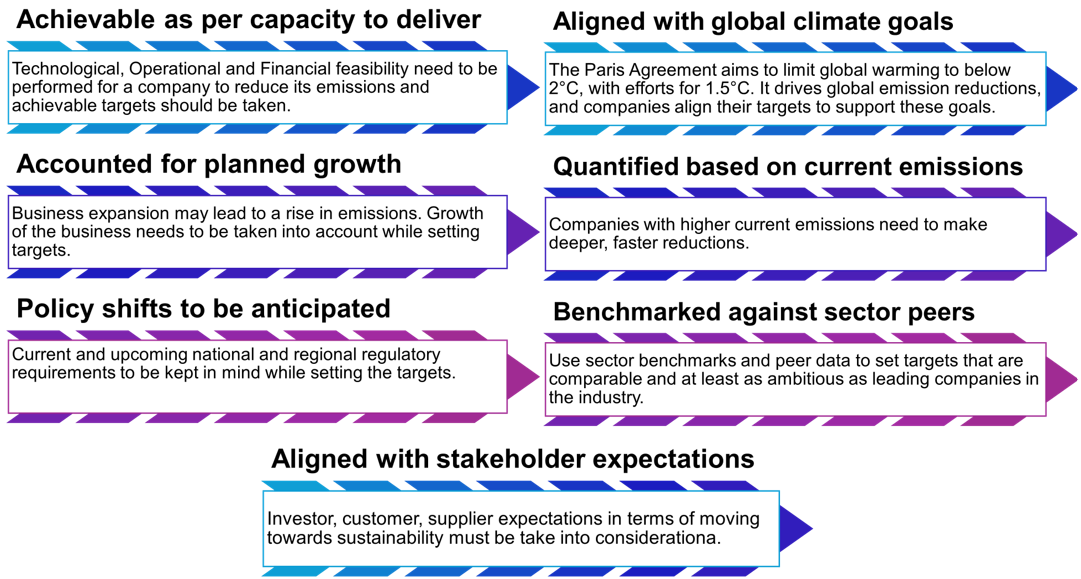What is Carbon Market?
Carbon market is a system where buyers and sellers come together to buy or sell carbon credits. Carbon Markets are of type types:
Compliance Carbon Market
Voluntary Carbon Market

Below are the key differences between these markets
| Feature | Compliance Markets | Voluntary Markets |
|---|---|---|
Purpose | To meet legally binding emission reduction targets | To offset carbon footprint basis internal voluntary targets |
Driven by | Regulations | Investor directions, consumer demands, corporate pledges |
Market Type | Highly regulated market with Government-mandated & legally enforced targets | Self-regulated market with entities taking voluntary targets, which can be over and above compliance targets. |
Typical Buyers | Heavy emitting industries like Oil & Gas, Energy & Power, Aviation & Manufacturing, etc. | Corporates with internal emission reduction targets, investor directions, and consumer demands |
Credit Price | May be directionally determined by regulatory bodies; | Market-driven, varies based on demand and supply. |
Factors affecting Credit Price | Mainly supply and demand. In addition, regulators may add floors and caps. Otherwise, there’s no differentiation between credits/allowances from different types of activities. | Mainly activity (project) type, which determines cost and directly impacts additionality. (Additionality is the price of carbon that makes the project viable). |
Certifying Bodies | Certified by designated government bodies of respective markets (Example: National Competent Authority in each EU country for EU-ETS, UK Environment Agency for UK ETS) | Certified by independently governed standards (e.g., Gold Standard, VERRA, Puro, Isometric, VCS) |
Compliance Carbon Markets
Compliance carbon markets are government-mandated systems where entities participate to meet regulatory emissions limits. These markets are primarily shaped by government policies, which in turn are impacted by global climate agreements.

Global Climate Agreements
The Kyoto Protocol (1997–2020) and the Paris Agreement (2015–present) establish the global framework for greenhouse gas reduction, shaping both national commitments and corporate targets. Beyond these, there are also sector-specific schemes for international transport: CORSIA (2016) – under International Civil Aviation Organization (ICAO), under which all international airlines must offset any CO₂ they emit above their 2019 baseline; and International Maritime Organization (IMO) Shipping Carbon Measures (2025) – a carbon tax on large ocean-going vessels (≥5,000 GT) that channels revenues into a GHG reduction fund for the maritime sector.)
Government Regulations (Mandatory Compliance)
Global climate agreements play an important role in pushing governments across the globe to set and meet compliance targets. Governments reduce emissions through:
Cap-and-Trade Systems: A cap-and-trade system sets a limit (cap) on total emissions allowed for industries or sectors. Companies emitting less than their limit can sell excess allowances (trade) to those exceeding their cap. Examples include the EU Emissions Trading System (EU ETS), the California Cap-and-Trade Program (USA), India’s Perform Achieve Trade scheme etc., which require companies to stay within emissions caps or purchase allowances to comply.
Carbon Taxes: Charge businesses a fee per ton of CO₂ emitted, as seen in Germany’s carbon pricing regulations in our previous insight.
Carbon Credits: Allowing businesses to offset compliance targets by procuring carbon credits. These credits can be procured from projects within the country and outside the country. The ones procured from outside the country are facilitated by mechanisms like Article 6 of the Paris Agreement.
Voluntary Carbon Markets
Voluntary carbon markets function outside government mandates, enabling corporates and individuals to offset their emissions beyond regulatory requirements.

🌱 Corporate Pledges
A significant number of companies are committing to net-zero targets. For instance, as of 2024, over 1,100 companies have set net-zero-aligned targets validated by the Science Based Targets Initiative (SBTi), a global organization that helps companies set science-based emissions reduction targets aligned with climate goals.
💰 Investor Directions
Investors seek to align their portfolios with environmental, social, and governance (ESG) criteria, influencing companies to adopt sustainable practices.
🛒Consumer Demands
Consumers increasingly favour brands committed to sustainability. A 2024 PwC survey found that, despite inflation, consumers are willing to pay 9.7% more for sustainably sourced goods.
.png)